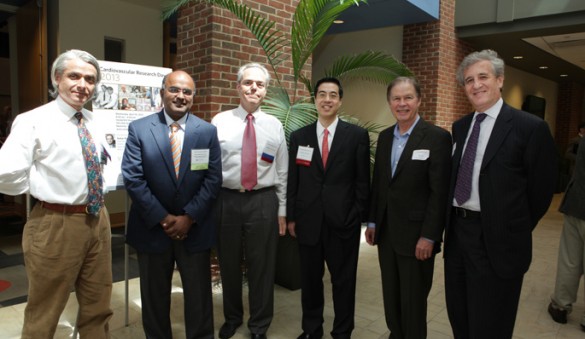
April 25, 2013
Cardiovascular Research Day
During Cardiovascular Research Day, keynote speaker Sekar Kathiresan, M.D., second from left, associate professor of Medicine, Harvard Medical School, visits with Vanderbilt Heart and Vascular Institute’s Sergio Fazio, M.D., Ph.D., left, MacRae Linton, M.D., Thomas Wang, M.D., David Harrison, M.D., and Dan Roden, M.D.
By VUMC News and Communications